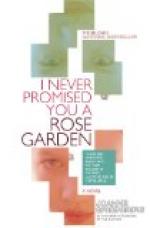But as neither walls nor leaves have tongues, Mary Penrose never learned the real ins and outs of this matter.
XVIII
THE VALUE OF WHITE FLOWERS
(Barbara Campbell to Mary Penrose)
Oaklands, September 29. Michaelmas. The birthdays of our commuters are not far apart. This being Evan’s festival, we have eaten the annual goose in his honour, together with several highly indigestible old-country dishes of Martha Corkle’s construction, for she comes down from the cottage to preside over this annual feast. Now the boys have challenged Evan to a “golf walk” over the Bluffs and back again, the rough-and-ready course extending that distance, and I, being “o’er weel dined,” have curled up in the garden-overlook window of my room to write to you.
It has been a good gardener’s year, and I am sorry that the fall anemones and the blooming of the earliest chrysanthemums insist upon telling me that it is nearly over,—that is, as far as the reign of complete garden colour is concerned. And amid our vagrant summer wanderings among gardens of high or low degree, no one point has been so recurrent or interesting as the distribution of colour, and especially the dominance of white flowers in any landscape or garden in which they appear.
In your last letter you speak of the preponderance of white among the flowering shrubs as well as the early blossoms of spring. That this is the case is one of the strong points in the decorative value of shrubs, and in listing seeds for the hardy or summer beds or sorting the bushes for the rosary, great care should be taken to have a liberal sprinkling of white, for the white in the flower kingdom is what the diamond is in the mineral world, necessary as a setting for all other colours, as well as for its own intrinsic worth.
Look at a well-cut sapphire of flawless tint. It is beautiful surely, but in some way its depth of colour needs illumination. Surround it with evenly matched diamonds and at once life enters into it.
Fill a tall jar with spires of larkspur of the purest blue known to garden flowers. Unless the sun shines fully on them they seem to swallow light; mingle with them some stalks of white foxgloves, Canterbury bells, or surround them with Madonna lilies, a fringe of spirea, or the slender Deutzia gracilis, more frequently seen in florists’ windows than in the garden, and a new meaning is given the blue flower; the black shadows disappear from its depth and sky reflections replace them.
The blue-fringed gentian, growing deep among the dark grasses of low meadows, may be passed over without enthusiasm as a dull purplish flower by one to whom its possibilities are unknown; but come upon it backgrounded by Michaelmas daisies or standing alone in a meadow thick strewn with the white stars of grass of Parnassus or wands of crystal ladies’ tresses, and all at once it becomes,—




